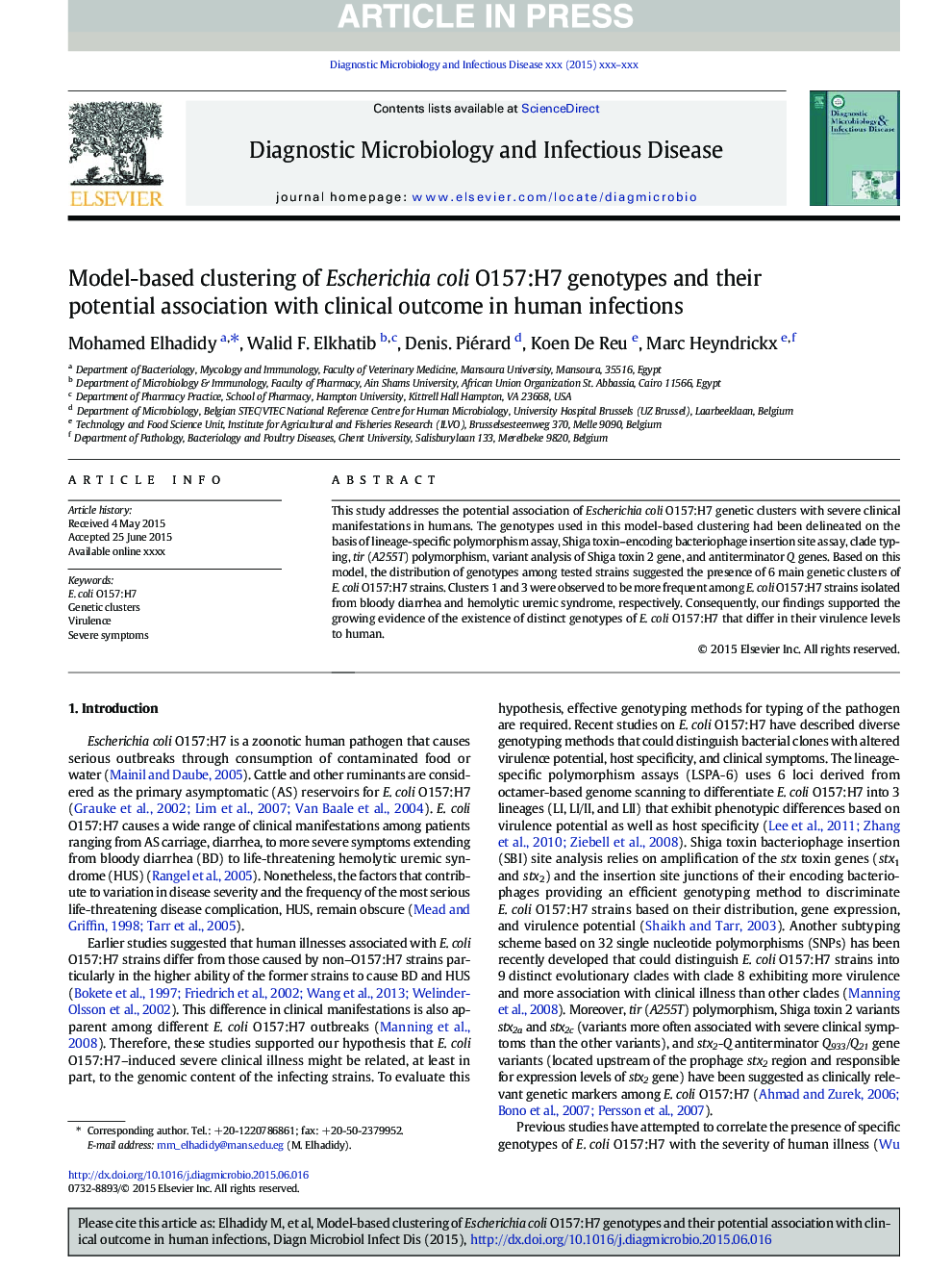| Article ID | Journal | Published Year | Pages | File Type |
|---|---|---|---|---|
| 6115472 | Diagnostic Microbiology and Infectious Disease | 2015 | 5 Pages |
Abstract
This study addresses the potential association of Escherichia coli O157:H7 genetic clusters with severe clinical manifestations in humans. The genotypes used in this model-based clustering had been delineated on the basis of lineage-specific polymorphism assay, Shiga toxin-encoding bacteriophage insertion site assay, clade typing, tir (A255T) polymorphism, variant analysis of Shiga toxin 2 gene, and antiterminator Q genes. Based on this model, the distribution of genotypes among tested strains suggested the presence of 6 main genetic clusters of E. coli O157:H7 strains. Clusters 1 and 3 were observed to be more frequent among E. coli O157:H7 strains isolated from bloody diarrhea and hemolytic uremic syndrome, respectively. Consequently, our findings supported the growing evidence of the existence of distinct genotypes of E. coli O157:H7 that differ in their virulence levels to human.
Keywords
Related Topics
Life Sciences
Immunology and Microbiology
Applied Microbiology and Biotechnology
Authors
Mohamed Elhadidy, Walid F. Elkhatib, Denis. Piérard, Koen De Reu, Marc Heyndrickx,
